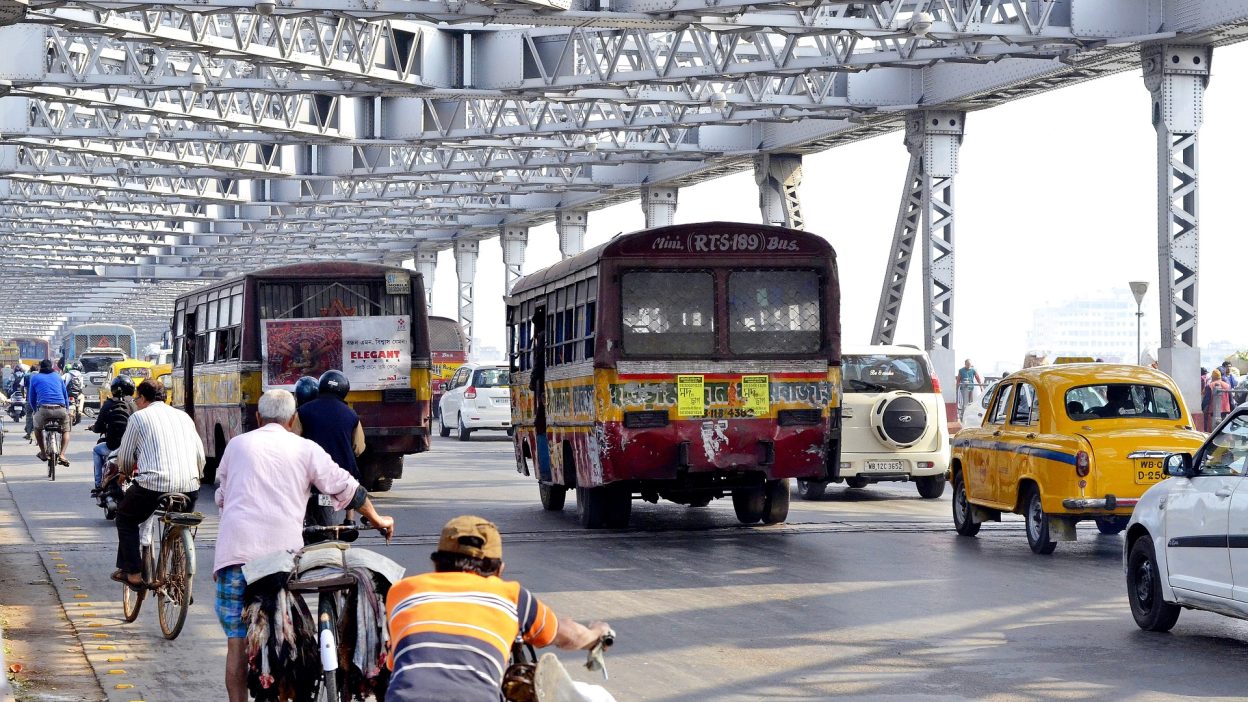How 1737 And 1864 Forever Changed The City – Unveiling The Shocking Truth Behind The Destruction
1. Introduction: A Killer That Strikes Twice
The Calcutta Cyclone is one of the deadliest natural disasters in recorded history, a force of nature that brought the bustling city of Calcutta (now Kolkata) to its knees. In 1737, a monstrous storm tore through the region, claiming thousands of lives and leaving an indelible scar on the city. This catastrophic event, which struck on October 12, saw winds so fierce that they uprooted entire trees, collapsed buildings, and submerged neighbourhoods. The death toll? Estimates vary, but some say as many as 10,000 people perished in its wake. The scale of the destruction was unimaginable, leaving Calcutta in ruins and sending shockwaves through the region. This was not just a storm—it was a brutal reminder of the city’s vulnerability to the raw power of nature, a vulnerability that would be tragically revisited in less than 130 years.
But the horrors of 1737 were only the beginning. 1864 saw an even deadlier storm strike Calcutta with a fury that would redefine the city’s history. On October 5, 1864, winds exceeding 115 mph tore through the city, causing devastation far beyond what the people of Bengal had ever experienced. This time, the cyclone left a trail of destruction that resulted in over 60,000 deaths, devastating the city’s infrastructure and causing massive flooding. The city’s economy, too, was hit hard as trade and agriculture collapsed in the aftermath. Both cyclones were not mere natural occurrences but monumental events that shaped the trajectory of the city. They forced the authorities to rethink storm preparedness, but even that was not enough to prevent the carnage of 1864. The sheer scale of these disasters is a reminder that no matter how much we advance, nature can still strike with an unimaginable fury, leaving us powerless in its wake.
2. The 1737 Calcutta Cyclone: An Early Warning of Nature’s Fury
The 1737 Calcutta Cyclone was the first recorded instance of a storm so catastrophic that it left an indelible mark on the city and the region as a whole. On October 12, 1737, the cyclone struck with terrifying force, catching the population off-guard. The intensity of the storm and the widespread destruction it caused would go on to shape the understanding of cyclones in the region. This was not a minor natural event, but a devastating disaster that changed how the British East India Company and local authorities viewed the power of nature. With the city of Calcutta at the heart of the storm’s path, it experienced the full brunt of its fury, with widespread damage to infrastructure, loss of life, and severe flooding that impacted both urban and rural areas. The human toll of the cyclone remains uncertain due to inconsistent historical records, but estimates suggest between 3,000 to 10,000 lives were lost, showcasing the scale of destruction it left in its wake.
Key Aspects of the 1737 Calcutta Cyclone:
• Date & Impact: October 12, 1737
The cyclone made landfall on October 12, 1737, a date that would forever be etched in Bengal’s history. The storm hit with a ferocity rarely seen, causing immediate and widespread destruction. The heavy rains and violent winds left the city flooded and entire buildings collapsed. It was a time when there were no sophisticated warning systems, making the devastation even more severe. The lack of preparedness meant that the population was caught unaware, resulting in a staggering loss of life and property.
• Wind Speeds & Destruction: Uprooted Trees & Collapsed Buildings
With wind speeds likely exceeding 100 mph, the 1737 cyclone brought a force that the city had never experienced. The winds were so powerful that they uprooted trees, collapsed buildings, and tore apart the fragile infrastructure of Calcutta. This storm was a reminder of nature’s overwhelming power, one that local authorities were entirely unprepared to handle. The physical damage was immense, with entire neighbourhoods submerged and thousands left homeless.
• Casualties & Loss of Life: Death Toll Estimates
Though estimates vary, the human toll from the 1737 cyclone is thought to be as high as 10,000 lives lost, though some sources put the number at a more conservative 3,000. The true death toll remains unclear due to the lack of proper record-keeping during that period, but regardless of the exact number, the magnitude of the catastrophe was immense. The cyclone’s violent winds and heavy rains contributed to massive flooding, and many lives were lost as homes were destroyed, drowning people or trapping them in the wreckage. It was a disaster on an unimaginable scale.
• The Aftermath & Government Response: A Call for Preparedness
Following the devastation of the 1737 cyclone, the British East India Company and local authorities were forced to take action. The government began to recognise the need for storm preparedness, though the response was slow and limited by the technology of the time. The event led to an increase in awareness about the vulnerability of Calcutta to cyclones, and in the following decades, measures were taken to improve disaster response. However, it would take several more decades before proper storm warning systems and infrastructure were put in place. The legacy of this cyclone lingered as a harsh lesson on the necessity of planning for natural disasters.
Here’s the blog converted into British English with bolded important stats and words:
3. The 1864 Calcutta Cyclone: A Deadlier Fury
The 1864 Calcutta Cyclone stands as one of the most powerful and deadly storms to ever hit the region, marking an even more destructive chapter in the city’s history. On 5th October 1864, a violent storm hit Calcutta with incredible force, leaving the city in utter devastation. Unlike the 1737 cyclone, the storm in 1864 brought more powerful winds, massive tidal surges, and further fatalities that pushed the city to its breaking point. The damage was far-reaching, affecting both the city’s population and its economy. With wind speeds reaching 115 mph, the cyclone was far more intense than its predecessor, and the city’s infrastructure was not built to withstand such a catastrophic event. The resulting loss of life was staggering—estimates suggest that over 60,000 people died due to the cyclone’s fury. In its aftermath, the storm left a massive trail of destruction that would take years to recover from, influencing how authorities would prepare for future storms.
Key Aspects of the 1864 Calcutta Cyclone:
• Date & Impact: 5th October 1864
The cyclone struck on 5th October 1864, hitting Calcutta with such intensity that it overwhelmed the city’s defences and preparedness. Unlike in 1737, where the city was largely unprepared, the authorities were aware of the possibility of cyclonic activity. However, even the early warning systems and precautions in place were insufficient to mitigate the devastation that the storm caused. The massive tidal surge, combined with the high winds, caused widespread flooding and destruction that would alter the city’s landscape.
• Wind Speeds & Destruction: 115 mph Winds & Widespread Damage
The cyclone’s winds reached speeds of 115 mph, causing extreme damage to Calcutta’s fragile infrastructure. The heavy rains and powerful gusts tore through buildings, uprooted trees, and caused landslides. Large areas of the city were flooded, with entire neighbourhoods submerged. The storm surge also ravaged the riverfront and port areas, leading to the destruction of ships and other critical infrastructure. The loss of property and the damage to the economy were unparalleled, leaving the city in disarray.
• Casualties & Loss of Life: Over 60,000 Dead
The human toll of the 1864 cyclone was far greater than the one in 1737. With over 60,000 deaths reported, this storm was far more deadly, affecting a population that had grown much larger and more densely packed in the intervening years. The combination of powerful winds, flooding, and structural collapses caused the death toll to skyrocket. Many died in the floodwaters, while others were trapped beneath the debris of their homes and buildings. The cyclone’s impact reached beyond just the loss of life—it also disrupted entire communities, with people left without shelter, food, or basic necessities.
• The Ripple Effect on Calcutta’s Economy: Trade & Agriculture Devastated
Beyond the human toll, the 1864 cyclone had a severe impact on Calcutta’s economy. The storm caused widespread damage to port facilities, halting trade and commerce for weeks. The destruction of agricultural lands, particularly along the riverbanks, resulted in crop losses that led to famine in some areas. The cyclone’s economic consequences were long-lasting, as it not only crippled Calcutta’s trade routes but also severely impacted the livelihoods of people dependent on agriculture and river transport. This economic downturn set the city back for years.
• Government Response & Lessons Learned: A Wake-Up Call
The scale of the 1864 cyclone led the British colonial government to reevaluate its disaster preparedness plans. The loss of life and property, combined with the economic fallout, highlighted the need for better infrastructure, early warning systems, and evacuation procedures. This event served as a harsh wake-up call for authorities, prompting the establishment of more robust disaster management practices in the years that followed. However, it took decades for the full impact of these changes to be realised, leaving many to wonder if the measures taken were enough to prevent another catastrophe of this magnitude. The events of 1864 remain a sobering reminder of the power of nature and the importance of preparation.
4. Comparison of the Two Calcutta Cyclones: Striking Differences, Alarming Similarities
While both the 1737 and 1864 Calcutta Cyclones were catastrophic in their own right, understanding the key differences and similarities between the two offers valuable insights into how these events impacted the city. The 1737 cyclone was an unexpected tragedy that caught the city off-guard, with a less developed infrastructure and an unprepared government. In contrast, the 1864 cyclone hit at a time when the city had grown more populous and urbanised, but even the modest improvements in preparedness were insufficient to prevent widespread destruction. While the 1737 storm was marked by brutal winds and flooding, the 1864 storm brought even more intense winds and catastrophic tidal surges, which left Calcutta struggling to rebuild for years. Despite these differences, both cyclones shared similar destructive forces, highlighting the city’s vulnerability and the urgent need for better disaster preparedness. The loss of life in both storms, along with the economic and social toll, illustrates how Calcutta’s defences against cyclones were still insufficient, even after the lessons of 1737.
Key Comparisons Between the 1737 and 1864 Calcutta Cyclones:
• Intensity & Strength: Early Power vs. Even Deadlier Force
The intensity of the 1737 cyclone was brutal, with wind speeds likely surpassing 100 mph, causing widespread devastation. However, the 1864 storm was stronger, with winds reaching up to 115 mph, making it even more destructive. The wind speeds in 1864 brought down larger and sturdier buildings, highlighting that, despite improvements in infrastructure over the decades, Calcutta was still vulnerable to such extreme forces of nature. The 1864 cyclone, with its higher wind speeds and devastating tidal surges, left a deeper and more lasting impact on the city.
• Casualties & Death Toll: A Staggering Increase
While the 1737 cyclone claimed an estimated 3,000 to 10,000 lives, the 1864 cyclone’s death toll was far higher, with over 60,000 people perishing. This significant increase in fatalities can be attributed to the higher population density in 1864, which left fewer places for people to shelter from the storm. In addition, the damage caused by the 1864 cyclone’s tidal surge resulted in more drowning deaths, contributing to the overall higher death toll. The 1864 cyclone’s death toll starkly shows how the city’s vulnerability had not been fully addressed in the years following the 1737 disaster.
• Government Response & Preparedness: Slow Progress in Storm Response
After the 1737 disaster, the British East India Company began to recognise the need for disaster preparedness. However, by 1864, the city still lacked a proper storm warning system. Despite advancements in some aspects of infrastructure, such as the construction of more resilient buildings and the development of rudimentary evacuation plans, the response to the 1864 cyclone was still inadequate. The government’s delayed action to improve storm preparedness led to a massive loss of life and further economic fallout. While some lessons were learned after 1737, the 1864 cyclone demonstrated that Calcutta’s defences were still not sufficient to handle such a catastrophic event.
• Economic Impact & Recovery: A City in Ruins
Both cyclones had severe economic consequences, but the damage caused by the 1864 cyclone was far worse. In 1737, the storm disrupted trade, but the city’s economy was able to recover within a few years. By 1864, however, Calcutta had become a much larger and more commercially dependent city, and the cyclone caused a prolonged economic downturn. Port operations were halted, trade routes were severed, and agricultural land was destroyed. It took years for the city to fully recover, and the economic scars of 1864 were felt for decades. The scale of the damage from the 1864 cyclone served as a crucial turning point, pushing the authorities to focus on long-term disaster management strategies.
• Social & Cultural Impact: Lingering Trauma Across Generations
The social and cultural impact of both cyclones was immense. After the 1737 storm, Calcutta was left in a state of shock, with people rebuilding their lives from scratch. However, by 1864, the city had grown more populous, and the scale of the devastation left a profound psychological and social toll on its people. The sheer scale of the destruction in 1864 disrupted entire communities, and many people were displaced or left without shelter. The trauma of the storm reverberated across generations, leaving an indelible mark on the collective consciousness of the city. The 1864 cyclone also amplified the awareness of cyclonic threats, resulting in a more cautious approach to urban planning and storm preparedness in the decades that followed.
Through these comparisons, it’s clear that while the 1737 cyclone set the stage for future disaster preparedness, the 1864 cyclone exposed the limitations of that progress. Despite the differences in intensity, casualties, and government response, both storms shared an eerie similarity in their ability to devastate the city and leave a lasting legacy of destruction.
5. The Legacy of the Calcutta Cyclones: Lessons Unlearned?
The Calcutta Cyclones of 1737 and 1864 left deep, lasting scars on the city’s landscape, economy, and psyche. While the authorities of the time made some efforts to improve disaster preparedness after the 1737 event, it was clear that these lessons were not fully applied by the time the 1864 storm struck. After the 1737 cyclone, there was a recognised need for better storm preparedness, leading to some improvements in infrastructure and response strategies. However, by the time the 1864 cyclone arrived, despite the city’s growth and population increase, the authorities still lacked a robust early warning system and effective disaster response strategies, which resulted in an even more devastating loss of life. The failure to address the city’s vulnerability to such cyclones highlighted the slow pace of progress in disaster management, despite the severity of the earlier storm.
The legacy of these cyclones became a turning point in how future generations would approach the risk of cyclones in Bengal. Both events underlined the inadequacies of existing infrastructure and the necessity of a more proactive approach to disaster preparedness. While the storms did spur improvements over the years, such as better port defences and more resilient urban planning, it wasn’t until much later that the full scale of measures needed to handle such natural disasters was truly understood. These cyclones acted as harsh reminders of the power of nature and the importance of long-term planning, yet their devastating impacts also served as an early wake-up call for the future, forcing the city to adopt more modern approaches to dealing with the unpredictable fury of nature.
6. Lessons Learned: Shaping Calcutta’s Disaster Response and Resilience
The Calcutta Cyclones of 1737 and 1864 were monumental events that forced both the British East India Company and local authorities to confront the brutal reality of nature’s power. The first lesson was the critical need for proper disaster preparedness. After the 1737 cyclone, it became painfully clear that Calcutta’s infrastructure and response systems were insufficient to protect the population. This realisation pushed authorities to consider improvements, such as the construction of more resilient buildings, although these efforts were far from adequate by the time the 1864 cyclone struck. The sheer scale of devastation in 1864, with over 60,000 lives lost, highlighted the need for more comprehensive measures, including better urban planning, storm shelters, and early warning systems.
The most significant lesson drawn from these disasters was the importance of timely and coordinated response efforts. The 1864 cyclone revealed the failure of existing preparedness strategies, emphasising the need for clear communication and faster evacuation procedures. While Calcutta’s authorities began to make improvements in storm management and response systems, it was only after these devastating events that the city fully recognised the critical need for an organised, proactive approach to natural disasters. These lessons would shape the future of disaster preparedness in Calcutta and the broader region, leading to a stronger focus on modern infrastructure, early warning technologies, and effective public awareness campaigns. Ultimately, the cyclones served as a wake-up call, pushing authorities to take action, though it would take decades for these lessons to be fully implemented.
7. The Look of Calcutta After the Cyclones: Physical and Cultural Transformation
The devastation caused by both the 1737 and 1864 cyclones left Calcutta physically and culturally transformed. In the aftermath of the 1737 storm, the city had to rebuild from the ground up. The storm’s massive destruction of infrastructure, buildings, and homes forced Calcutta to reevaluate its urban development. While much of the city was rebuilt, the impact of the cyclone led to a shift in how buildings and settlements were designed, with a greater focus on sturdier construction. However, the physical landscape of Calcutta remained vulnerable to future storms. The cultural fabric of the city was also affected, as the loss of so many lives, and the trauma associated with it, left deep emotional scars on the local population. The memory of the 1737 cyclone lingered, shaping a generation that would grow up with the awareness of nature’s destructive potential.
The 1864 cyclone deepened the transformation of Calcutta, both physically and culturally. The sheer scale of the disaster in terms of lives lost and damage to the economy was unprecedented. While Calcutta’s skyline had evolved since 1737, with more solid structures and improved infrastructure, the 1864 storm exposed the weaknesses that still existed. The city’s riverside and port areas, which had been vital for trade and commerce, were severely damaged, leaving the city’s economic heart in ruins. The storm also left an indelible cultural mark, as the massive death toll and destruction left the people of Calcutta in a state of grief and fear. The trauma from the 1864 cyclone led to an increased awareness of the city’s vulnerability to cyclones, prompting further reforms in urban planning and storm preparedness. As the city rebuilt yet again, the legacy of both cyclones shaped its cultural identity, with resilience becoming a defining feature of Calcutta’s response to future natural disasters.
8. Conclusion: A City Transformed, Forever Shaped by Cyclonic Fury
The Calcutta Cyclones of 1737 and 1864 forever altered the city, both in terms of its physical structure and its cultural identity. The destruction caused by these storms forced Calcutta to confront its vulnerabilities, leading to significant changes in urban planning and disaster preparedness. After the 1737 cyclone, Calcutta’s infrastructure was rebuilt with greater emphasis on durability, but the lack of proper storm preparedness remained a pressing issue. The storm’s traumatic impact on the population shaped a generation that was more aware of nature’s destructive power, influencing cultural attitudes toward future disasters. However, the 1864 cyclone, with its far greater intensity and a staggering loss of over 60,000 lives, deepened the sense of vulnerability, forcing authorities to recognise the urgent need for better preparedness.
In conclusion, both cyclones left an indelible mark on Calcutta’s identity, sparking critical changes in urban planning, storm management, and disaster response. While the city has evolved significantly since these events, the lessons learned from the devastating 1864 storm have shaped modern disaster management strategies across the region. Calcutta, having rebuilt multiple times in the wake of such calamities, now stands as a testament to resilience in the face of nature’s overwhelming power. These storms not only transformed the physical and cultural landscape of Calcutta but also highlighted the ever-present threat of cyclonic fury, reinforcing the importance of preparedness in the face of inevitable disasters.
Frequently Asked Questions (FAQs)
- What was the cause of the Calcutta Cyclones?
The Calcutta Cyclones were caused by low-pressure systems over the Bay of Bengal, intensified by warm sea temperatures and atmospheric conditions that led to the formation of powerful storms. These conditions triggered both cyclones in the region. - How did the British colonial government respond to the cyclones?
After the 1737 cyclone, the British East India Company began to focus on urban planning and storm mitigation. However, the 1864 cyclone exposed the inadequacy of these measures, prompting better disaster preparedness and long-term infrastructure improvements. - How did the cyclones affect the local economy?
Both cyclones disrupted trade, port operations, and agriculture. In 1864, the damage was particularly severe, leading to a prolonged economic downturn and loss of revenue due to the destruction of shipping ports and agricultural land. - Were there any modern scientific efforts to predict such cyclones?
Modern meteorology, established after the 1864 disaster, has led to better forecasting systems. However, in the 18th and 19th centuries, predicting cyclones was nearly impossible, and there were no advanced tools to warn the population. - Did the cyclones impact the population of Calcutta differently?
The 1737 cyclone caused the death of 3,000 to 10,000 people, while the 1864 cyclone saw a staggering loss of over 60,000 lives, due to the higher population density, lack of evacuation systems, and stronger storm intensity.
References:
- “280th Anniversary of the Calcutta Cyclone”
NOAA’s Atlantic Oceanographic and Meteorological Laboratory
https://www.aoml.noaa.gov/hurricane_blog/280th-anniversary-of-the-calcutta-cyclone/ - “1864 Calcutta Cyclone”
Wikipedia
https://en.wikipedia.org/wiki/1864_Calcutta_cyclone - “The 1737 Calcutta Earthquake and Cyclone Evaluated”
CIRES, University of Colorado Boulder
https://cires1.colorado.edu/~bilham/gif_images/1737Calcutta.pdf
YT links:
The Track Of 1737 Calcutta Cyclone
https://www.youtube.com/watch?v=qolsMcScnCU




